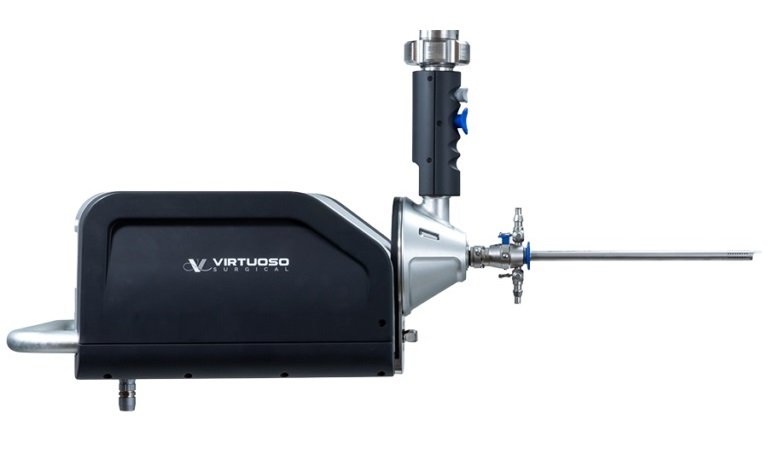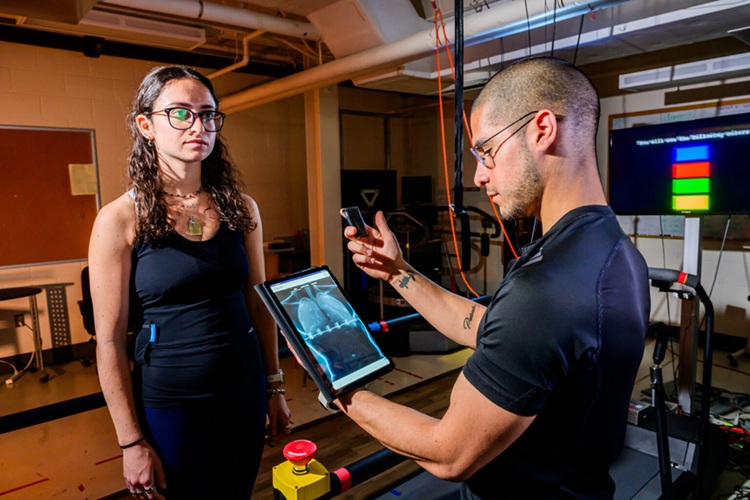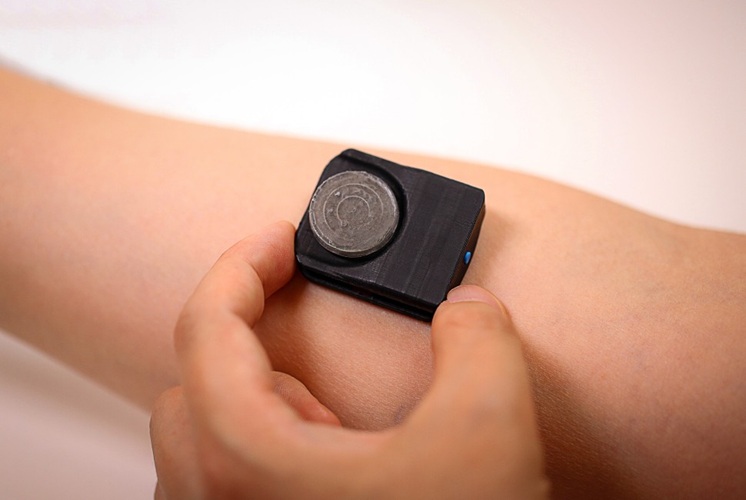Novel Approach Combines Advanced Robotics and Low-Field MRI Technology for Incisionless Prostate Surgery
|
By HospiMedica International staff writers Posted on 07 Oct 2024 |

Researchers at Case Western Reserve University (CWRU, Cleveland, OH, USA) and Vanderbilt University (Nashville, TN, USA) are spearheading a groundbreaking approach to prostate cancer surgery by integrating advanced robotics with “low-field” MRI technology. This research aims to achieve highly precise, personalized prostate cancer surgeries without the need for traditional incisions. This innovative work represents a significant advancement in minimally invasive prostate cancer treatments, with the potential to enhance both patient safety and procedural efficiency.
The research team plans to adapt a robotic system from Virtuoso Surgical Inc. (Nashville, TN, USA) to remove prostate cancer lesions, combining it with Promaxo Inc.’s (Oakland, CA, USA) MRI technology. The Virtuoso Surgical system features two robotically controlled, needle-sized manipulators working from the tip of a rigid endoscope that is less than half the diameter of a U.S. dime. This endoscope is significantly smaller than current robotic endoscope systems, and its manipulators are just 1mm in diameter. Equipped with a camera, the endoscope offers a variety of tools depending on the procedure, such as a tissue grasper, retractor, tissue snare, laser aiming manipulator, and electrosurgical devices. Virtuoso is progressing toward the commercialization of its robotic surgical system and also exploring the application of its robotic technology for bladder lesion removal. While initial clinical applications are likely to focus on bladder lesions and benign prostatic hyperplasia (BPH) tissue removal, this technology has the potential to enhance numerous surgical procedures performed through rigid endoscopes.
Unlike traditional transrectal ultrasound, Promaxo’s MRI can image the prostate without obstructing surgical access to the lesions. Promaxo’s MRI system, FDA cleared for in-office use, integrates AI-based imaging to guide prostate interventions with precision. Designed for ease of transport and installation, Promaxo’s MRI can be set up in a standard physician’s office with minimal facility modifications. Unlike conventional MRI systems, it does not require hazardous materials or complex safety protocols, such as quenching. The system's confined fringe field eliminates the need for RF shielding, while its quieter operation and low energy consumption make it both patient-friendly and cost-effective.
“Our goal is to eliminate the many complications associated with whole-gland prostate removal to treat prostate cancer,” said William Grissom, the Medtronic Professor of Biomedical Discovery and Innovation at the Case Western Reserve School of Medicine and Case School of Engineering. “Targeted removal of localized prostate lesions could alleviate these complications but is challenging because cancerous tissue can appear identical to healthy tissue in endoscopic images, making accurate surgery difficult.”
“The new robot will be able to carefully guide surgical instruments directly to prostate cancer lesions identified in high-field MR images,” added Robert Webster, the Richard A. Schroeder Professor of Mechanical Engineering at Vanderbilt University. “This will enable surgeons to focus treatment on specific cancerous lesions.”
Related Links:
CWRU
Vanderbilt University
Virtuoso Surgical Inc.
Promaxo Inc.
Latest Surgical Techniques News
- World's First AI Surgical Guidance Platform Allows Surgeons to Measure Success in Real-Time
- AI-Generated Synthetic Scarred Hearts Aid Atrial Fibrillation Treatment
- New Class of Bioadhesives to Connect Human Tissues to Long-Term Medical Implants
- New Transcatheter Valve Found Safe and Effective for Treating Aortic Regurgitation
- Minimally Invasive Valve Repair Reduces Hospitalizations in Severe Tricuspid Regurgitation Patients
- Tiny Robotic Tools Powered by Magnetic Fields to Enable Minimally Invasive Brain Surgery
- Magnetic Tweezers Make Robotic Surgery Safer and More Precise
- AI-Powered Surgical Planning Tool Improves Pre-Op Planning
- Novel Sensing System Restores Missing Sense of Touch in Minimally Invasive Surgery
- Headset-Based AR Navigation System Improves EVD Placement
- Higher Electrode Density Improves Epilepsy Surgery by Pinpointing Where Seizures Begin
- Open-Source Tool Optimizes Placement of Visual Brain Implants
- Easy-To-Apply Gel Could Prevent Formation of Post-Surgical Abdominal Adhesions
- Groundbreaking Leadless Pacemaker to Prevent Invasive Surgeries for Children
- Spectroscopy Technique Improves Surgery for Pediatric Epilepsy Patients
- Bioengineered Arteries Show Promise for Cardiovascular Surgery
Channels
Critical Care
view channel
Generative AI Technology Detects Heart Disease Earlier Than Conventional Methods
Detecting heart dysfunction early using cost-effective and widely accessible tools like electrocardiograms (ECGs) and efficiently directing the right patients for more expensive imaging tests remains a... Read more
Wearable Technology Predicts Cardiovascular Risk by Continuously Monitoring Heart Rate Recovery
The heart's response to physical activity is a vital early indicator of changes in health, particularly in cardiovascular function and mortality. Extensive research has demonstrated a connection between... Read more
Wearable Health Monitoring Device Measures Gases Emitted from and Absorbed by Skin
The skin plays a vital role in protecting our body from external elements. A key component of this protective function is the skin barrier, which consists of tightly woven proteins and fats that help retain... Read morePatient Care
view channel
Portable Biosensor Platform to Reduce Hospital-Acquired Infections
Approximately 4 million patients in the European Union acquire healthcare-associated infections (HAIs) or nosocomial infections each year, with around 37,000 deaths directly resulting from these infections,... Read moreFirst-Of-Its-Kind Portable Germicidal Light Technology Disinfects High-Touch Clinical Surfaces in Seconds
Reducing healthcare-acquired infections (HAIs) remains a pressing issue within global healthcare systems. In the United States alone, 1.7 million patients contract HAIs annually, leading to approximately... Read more
Surgical Capacity Optimization Solution Helps Hospitals Boost OR Utilization
An innovative solution has the capability to transform surgical capacity utilization by targeting the root cause of surgical block time inefficiencies. Fujitsu Limited’s (Tokyo, Japan) Surgical Capacity... Read more
Game-Changing Innovation in Surgical Instrument Sterilization Significantly Improves OR Throughput
A groundbreaking innovation enables hospitals to significantly improve instrument processing time and throughput in operating rooms (ORs) and sterile processing departments. Turbett Surgical, Inc.... Read moreHealth IT
view channel
Printable Molecule-Selective Nanoparticles Enable Mass Production of Wearable Biosensors
The future of medicine is likely to focus on the personalization of healthcare—understanding exactly what an individual requires and delivering the appropriate combination of nutrients, metabolites, and... Read more
Smartwatches Could Detect Congestive Heart Failure
Diagnosing congestive heart failure (CHF) typically requires expensive and time-consuming imaging techniques like echocardiography, also known as cardiac ultrasound. Previously, detecting CHF by analyzing... Read moreBusiness
view channel
Expanded Collaboration to Transform OR Technology Through AI and Automation
The expansion of an existing collaboration between three leading companies aims to develop artificial intelligence (AI)-driven solutions for smart operating rooms with sophisticated monitoring and automation.... Read more
















